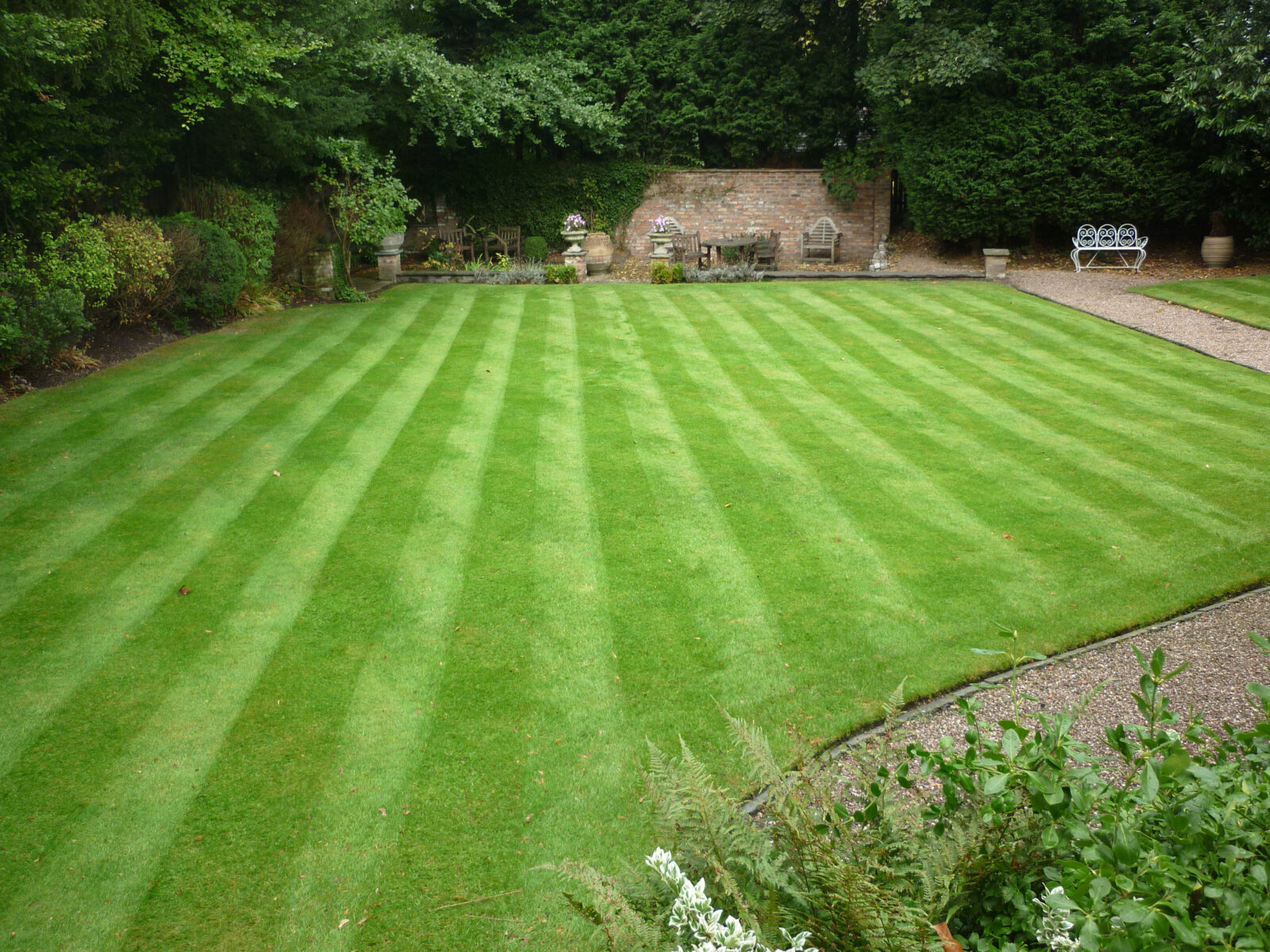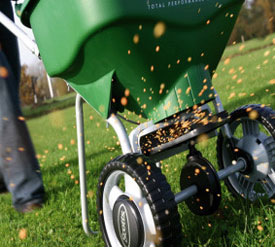


Application of the correct, seasonally balanced fertiliser, is essential to maintain the health and appearance of your lawn. Throughout the year lawns need different nutrients to help various processes take place. Lawnscience provides lawn fertilisation applications throughout the year as part of its annual treatment programme. You can book an annual plan tailored to your lawn and budget or a one-off application.
It’s the process of adding nutrients to your lawn that move down into the soil. These nutrients supplement the nutrients in your soil promoting the healthy growth of your grass.
The lawns we desire today are not as natural as we think. Grass naturally thrives in a “polyculture’ an environment in which different plant species exist. In polycultures, various species tend to help each other survive. An example would be clover and grass. Clover has a symbiotic bacteria within its root system enabling it to “fix” Nitrogen. This is helpful to the grass as it converts atmospheric nitrogen into nitrates, which can be utilised by the grasses’ roots. Clover roots are also deep. These roots store carbon and move nutrients up higher in the soil profile, where the grasses’ shallow roots can access them. The lawns we desire are “monocultures”. We create them to suppress species we consider undesirable, such as weeds. Monocultures are not natural environments for grass, therefore we need to assist the grass by supplying nutrients.
Manufactured or Inorganic Fertilisers contain synthesized or manufactured nutrients. They are more often concentrated and provide quicker results.
Organic Fertilisers are created from animal sources or plant nutrients. A slow-acting fertiliser due to the organic inputs that are broken down by organisms within the soil, before the nutrients are available to the grass plant.
Nutrients are divided into macro and micronutrients. Both are important for the health of the plant. Macronutrients have a concentration of above 1000 parts per million. Micronutrients have a concentration of 100 parts per million or less.
The main macronutrients are Nitrogen (N), Phosphorous (P), and Potassium (K). Lawn Fertilisers will normally have a label indicating the percentage of these three elements, i.e. 22-5-8 which equates to 22% Nitrogen, 5% Phosphorous, and 8% Potassium. The rest of the ingredients are fillers and anti-caking additives.
Nitrogen is an essential element for all living organisms. It is readily available in the atmosphere, 80% of the air is Nitrogen gas. Grassroots utilise this once converted into nitrate or ammonium.
Nitrogen is a component of many of the processes which take place within the plant. One of its main uses is the production of Chlorophyll, which gives grass its green colour. It also plays a key role in photosynthesis, where the grass plant converts light energy from the sun into chemical energy stored in carbohydrates. Nitrogen is also active in the production of amino acids and proteins.
Grass needs Nitrogen in the largest quantity during its growth peak in Spring. This is because during this time of the year the plant is actively growing. The process of Photosynthesis is producing the carbohydrates required to drive growth.
A great lawn care company will only apply Nitrogen to grass in the correct quantity for the time of year. Too little and the grass leaf turns yellow, indicating chlorosis a lack of chlorophyll. Too much and the plant will produce excessive amounts of weak above-ground tissue at the expense of root development.
Present within every living cell in the grass plant, Phosphorous plays a key role in many of the plant compounds that are essential for growth. Its main function within the plant is the storage and transfer of energy. Insufficient Phosphorus restricts the normal growth and development of grass plants. The development of the root system adversely affects seed production.
Grass requires relevantly high levels of Potassium, second only to Nitrogen. It plays an important role in the growth and development of the plant. It helps the grass plant to develop thick cell walls making it more resistant to excessive heat and cold. High levels of Potassium help increase your grass plants’ resistance to fungal diseases such as Red Thread and Fusarium.
The remaining macronutrients are Sulphur, Magnesium, and Calcium.

Lawnscience supports the RHS by annual charitable donations

Enter your details below to request a call back from us.

Enter your details below to request a call back from us.